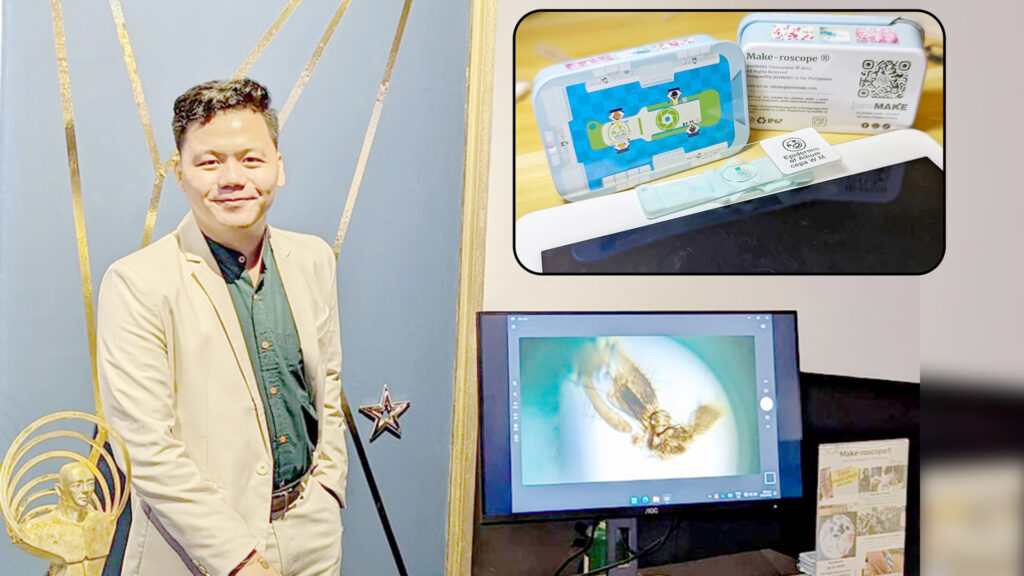It’s a small world after all. So goes a song by movie themes composers and brothers Richard and Robert Sherman. And Filipino inventor Jeremy de Leon proves this by showing the living creatures in a drop of lake water through his invention, the Make-roscope.
De Leon is not taking the credit from Dutch spectacle makers and father-and-son Hans and Zacharias Janssen who created the first microscope in 1590 and introduced mankind to the bizarre cellular world. His own invention is the smallest version of the common laboratory instrument used by students and scientists to examine organisms and cells. It is the size of a Band-Aid strip.
“The Make-roscope is a smartphone accessory that turns the smartphone into a microscope,” explains the 26-year-old manufacturing engineering graduate of Mapua University.
When placed on top of a smartphone’s or tablet’s front camera lens, the Make-roscope can magnify specimens laid on top of it 125 to 400 times. At such magnification, one may see blood cells, bacteria and protozoans, according to Microscope International.
“It is made of high-quality silicone so that it is durable because if we are going to use it repeatedly, we need to be able to maintain it. It should be durable. Especially with the children, we know that they are a bit clumsy, and it needs to be able to withstand that,” according to De Leon.
The award-winning invention — it was named the 2023 James Dyson Award national winner — is available in online stores and De Leon’s website, JereMake.com, as a kit that includes specimen slides, pipettes, tweezers and tubes. Each kit is priced at P549.
He invented the Make-roscope in 2021 with the students in mind.
“I did this because during the (Covid-19) pandemic, the classrooms were closed, the laboratories were closed, and it seemed like there must be something that even if they (students and teachers) were at home, they could do lab activities,” he says.
More than 5,000 Filipino students and teachers are currently using the keychain microscope.
De Leon recalls how he started mass producing the Make-roscope.
He invented the Make-roscope during the Covid-19 pandemic with the students in mind.
“It’s like the goal happened because of TikTok. I produced a piece and I showed it to them. I said I want to produce something like this and I’ll give it away for free. It’s supposed to be for those who watched TikTok, but I’m really only holding one,” he says, adding that he received many queries about where it could be bought after posting his invention on the popular video-sharing platform.
“There was also a comment that said, ‘Why not apply to DoST (Department of Science and Technology) or DepEd (Department of Education) to get funding?’ and then I started looking for the DoST grant.”
During his application to the DoST’s Technology Application and Promotion Institute for funding, De Leon said it was smooth sailing, as the people in the agency were very welcoming and accommodating to aspiring developers like him.
“At first, I was a bit nervous because there were a lot of documents (needed), but the program manager and the staff were very helpful. The atmosphere is very welcoming for you to get a grant,” De Leon says.
He used the P123,000 grant from DoST to produce 1,000 initial units of the keychain microscope and sold them to raise the seed fund for his startup JereMake.
An inventor’s legacy is his or her invention. At his young age, De Leon already has one.
“The legacy I want to leave is when they want to explore, or any youth, when they think of science, they think of the Make-roscope at some point,” he says.
